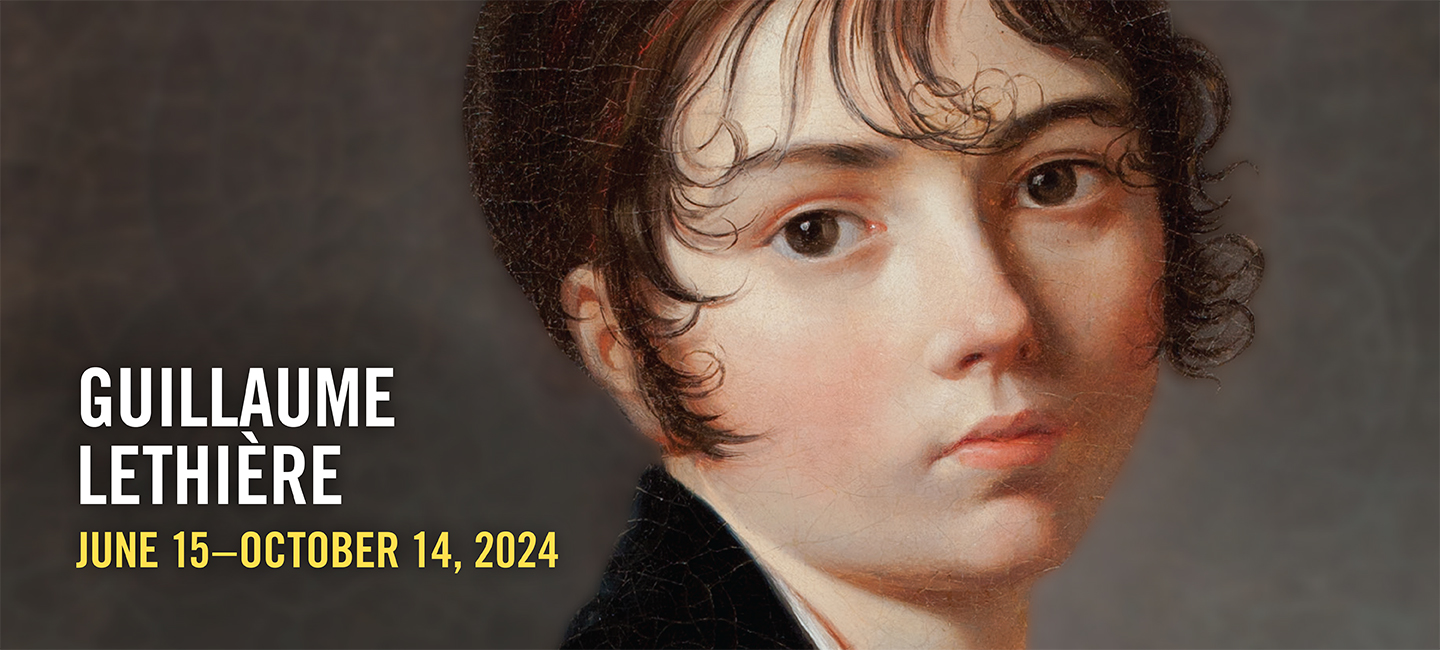Oath of the Ancestors
 Guillaume Lethière, Oath of the Ancestors, 1822, oil on canvas. Musée du Panthéon National Haïtien, Port-au-Prince. Photo: RMN-Grand Palais / Art Resource, NY
Guillaume Lethière, Oath of the Ancestors, 1822, oil on canvas. Musée du Panthéon National Haïtien, Port-au-Prince. Photo: RMN-Grand Palais / Art Resource, NYLethière’s monumental Oath of the Ancestors celebrates the alliance of two of Haiti’s founding revolutionaries, the mixed-race general Alexandre Pétion and the Black general Jean-Jacques Dessalines. The 1802 coalition formed by the two men would prove to be a decisive moment in Haiti’s battle for independence, declared in 1804. Utterly unique in Lethière’s oeuvre and in French painting of the period, the triumphant image celebrating the former colony’s independence and abolition of slavery is signed “g. guillon Le Thiere né a La Guadeloupe aИ 1760 Paris 1822 7bre.” (g. guillon Le Thiere born in Guadeloupe 1760 Paris 1822. September.). It is the only painting that the artist signed with his birthplace, demonstrating his personal identification with the Caribbean and the oath undertaken by these two men.
Lethière painted the canvas in 1822, after Pétion’s successor President Jean-Pierre Boyer unified the country, which had remained divided since its independence. Lethière’s son Auguste Lethière sailed to Haiti to deliver the painting to President Boyer himself in 1822, along with a note of introduction from the prominent French abolitionist Abbé Grégoire:
“My letter will be given to you by M. Lethière fils whose European color [couleur Européenne] does not reveal his origin, because heir to the sentiments of his esteemed father who was born in Guadeloupe, they have always been honored to be men of color.”
At that political moment, France had not yet recognized Haiti’s independence, so Auguste’s journey was covert, dangerous, and all the more remarkable. The painting was installed in the cathedral in Port-au-Prince, Haiti, until the 1990s. In 1995, it was restored in France before being exhibited both there and in Guadeloupe to commemorate the 150th anniversary of the French abolition of slavery in 1998. After its exhibition, the painting was returned to Haiti, where it was installed in the Presidential Palace. After sustaining new damage in Haiti’s devastating 2010 earthquake, it was once again restored.
While the Musée du Panthéon National Haïtien generously agreed to lend Oath of the Ancestors to the exhibition, the current humanitarian crisis in Haiti prevented it from traveling at the time of the exhibition’s opening.
